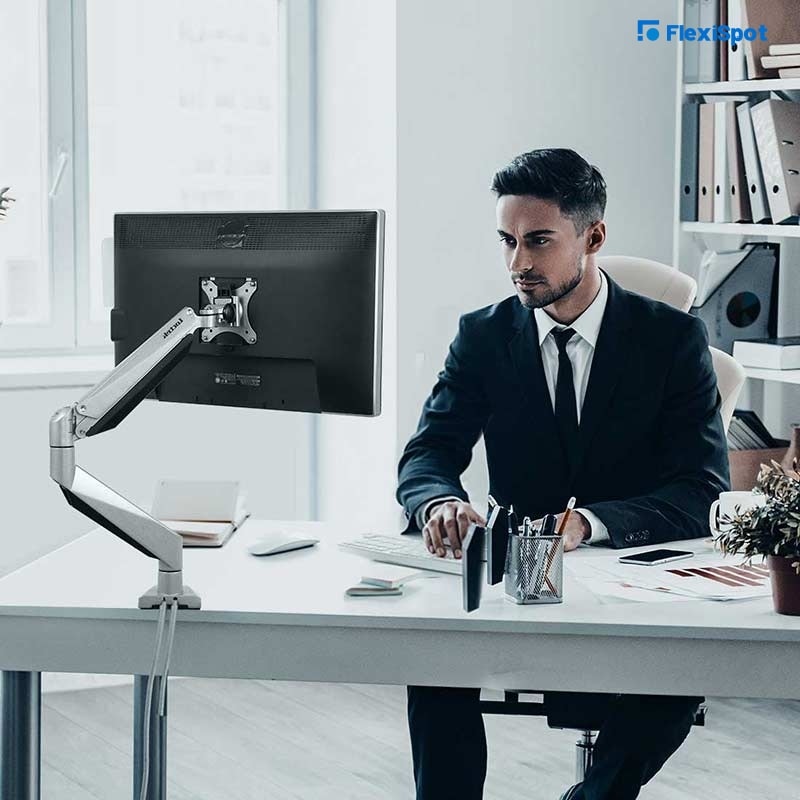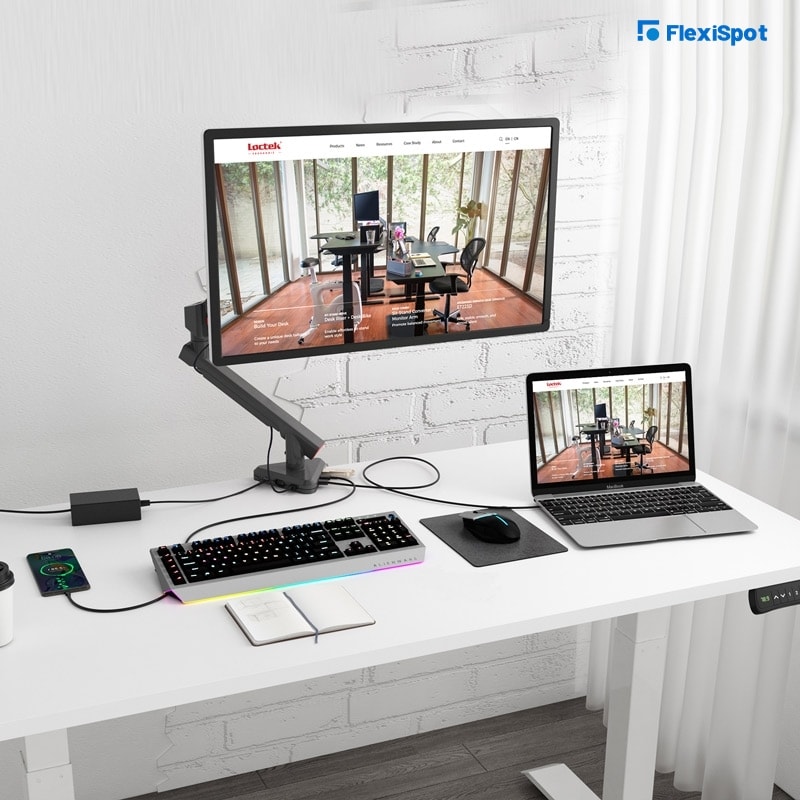Adopting the proper sitting position is essential for good posture and a healthy back and spine. It not only promotes physical health, but it can also boost one's confidence. Therefore, today we will discuss excellent posture and the ideal seating position to achieve it, particularly when using a computer or sitting at a desk. Continue reading to learn everything you need to know about the best sitting positions.
What Exactly Is Good Posture & Why Is It Important?
When sitting or standing, good posture is essential to your long-term health and wellness. When you have a good posture, the essential portions of your body are perfectly aligned and supported by the appropriate amount of muscular tension.
Correct posture can help by minimizing bodily strain during movement and exercise and lowering joint, muscle, and ligament wear and strain. It also helps with body balance and lowers the likelihood of muscle strain and overuse problems. Most of all, it enhances spinal health, which is important to lead an active life.
The Ideal Posture While Sitting
The correct sitting position may vary from person to person. It is determined by a person's height, the chair being used, and the activity being performed while sitting. A person can improve their posture and obtain a correct sitting position by doing the following.
However, keep in mind that the following are some generic suggestions. Occasional deviations from predefined ranges are allowed and, in certain cases, helpful.
Lower Body
Keep joints, including the hips, knees, and ankles, slightly open (greater than 90°).
Maintain knee joints at or below hip joints and keep the ankles in front of the knees.
Maintain a three-finger space between the back of the knee joint and the front border of the chair.
Keep your feet flat or rest them on the floor or a footrest.
Spine & Shoulders
Sit up straight and forward without putting strain on the neck.
Maintain a 30° angle of uprightness in the upper torso.
Maintain the back rest's lumbar support in your lumbar region (around the waistband).
Ensure proper head-to-spine alignment at all times.
Position the working object such that it may be viewed from 10° to 30° below the line of sight.
Maintain a low and relaxed posture with your shoulders. Tuck your elbows in.
When looking down and forward, tuck your chin in and don't bend forward.
Arms & Hands
Where possible, keep the forearms and knees parallel to the floor.
Keep your upper arms between vertical and 20 degrees forward.
Maintain an elbow angle of 90° to 120°.
Keep your forearms between horizontal and 20 degrees up.
Keep your wrists straight and in line with your forearms.
Reposition yourself frequently while staying within the recommended parameters.
Positions to Avoid
Anything that causes a person's posture and back health to suffer might be caused by the overuse of specific muscles, ligaments, or tendons. Certain positions, particularly some sitting ones, are worse than others for overworking or abusing postural tissues. To avoid improper posture and back pain, avoid the following:
Slouching while typing on your computer or working on your desk.
Crossing your legs for long periods.
Crossing the knees, ankles, or arms
Bending to the side or bending forward.
Sitting in the same position for more than 50 minutes at a time.
Hanging or inadequately supporting the feet.
Straining the neck for extended periods of time while staring at a computer, phone screen, or document.
Additional Tips to Improve Your Sitting Position at Work
Now that your back is in a decent position, you should consider other elements that influence your posture, such as where to place your feet and how far away your screen should be. Here are some things that can help improve your posture and eliminate back and neck pain.
Ensure Proper Back Support
Proper lumbar support is important to maintain a healthy posture. This is where ergonomic desk chairs come in. They are designed to support your body while sitting. If your workplace chair does not have lumbar support, you can roll up a small towel. However, it is not a long-term solution.
Therefore, it is advisable to invest in a high-quality ergonomic office chair. If you are looking for the perfect ergonomic chair with lumbar support, consider FlexiSpot Soutien Office Chair.
The Soutien provides the ultimate seated experience behind your desk with its 3D lumbar support system. The curved backrest ergonomically fits the neck and spine for optimal headrest and lumbar support. You can also benefit from the breathable mesh back.
Reposition Your Armrests
Your arms should also be parallel to the ground. As you sit, set your elbows at your sides and extend your arms in an L-shape. Arms that are too far out from your torso may put a strain on the muscles in your arms and shoulders.
The good news is that FlexiSpot Soutien ergonomic office chair features flexible armrests that are adjustable in four directions, mold naturally to your arms and elbows for maximum comfort.
Adjust the Chair Height/ Depth
While sitting at your desk, you should have your feet flat on the floor. Adjust your seat so that your legs are parallel to the ground and your knees are even with your hips. If you're wearing heels, taking them off may be the most comfortable option. Use a footrest if your feet cannot reach the ground.
A better option is to invest in a FlexiSpot Soutien office chair. In addition to numerous other ergonomic benefits, you can also adjust the seat depth to tailor your sitting experience to your body form. The backrest also offers a 45° tilt that allows you to relax.
Maintain Eye Level with Your Screen
Positioning your screens correctly is essential to ensure a good sitting posture. Move the screen straight in front of you from your seated position. Extend your arm and move the monitor to about an arm's length away.
Next, change the monitor's height. The top of your computer screen should not be higher than 2 inches above your eye level. Computer monitors that are too low or too high might cause neck and eye pain.
Stacks of books are an easy way to alter the height of your monitor. However, adjustments are more flexible with free-standing display mounts, such as FlexiSpot Intelligent Monitor Arm with Docking Station MD01. It combines a standard monitor base with a USB docking station that has one type-c port, two USB ports, one VGA port, and one HDMI port.
The improved gas spring hovering mechanism allows for smoother movements, which helps to maintain an ergonomically correct workstation. You can sit more comfortably at your workstation while decreasing neck, eye, and back strain by extending or retracting the monitor arm and rotating it to landscape or portrait mode.
Ensure Proper Keyboard & Mouse Positioning
Your computer's keyboard should be positioned squarely in front of it. Allow 4 to 6 inches between the edge of the keyboard and the desk for your wrists to rest when typing.
Look for a padded wrist rest if your keyboard is tall and you have to tilt your wrists at an odd angle to type. Struggling to type might result in muscle fatigue and pain. Ergonomic wrist pads can assist you in aligning your hands evenly with your keyboard.
Your computer mouse should be on the same surface as your keyboard and easily accessible. Stretching to reach an item may result in muscle tension and weariness. Your wrist should be straight while operating the mouse. Your upper arm should be by your side, with your hands slightly below your elbows.
Keep Regularly Used Items within Easy Reach
Items that you frequently use, such as a stapler, phone, or notepad, should be close to you as you sit. Stretching to get to objects can put a strain on your muscles. Twists and stretches performed repeatedly may cause joint pain. An easy solution is to opt for a standing desk with a built-in drawer for storage. FlexiSpot Comhar All-in-One Standing Desk may be an excellent choice.
The Comhar standing desk features four height presets as it was created with the entire family in mind, and it has a wide adjustment range of 28.3 "-47.6" that makes it completely suited to children's height.
Furthermore, the Comhar occupies little floor space while providing one of the largest desktops available. A nook, corner, or empty wall is all that is required to accommodate Comhar for establishing your own home corner office.
The Bottom Line
Investing in a few ergonomically designed goods and knowing how to sit properly can go a long way toward decreasing muscle and bone wear and tear. This can truly pay off throughout the course of your career as you avoid injuries, strains, and pain. Visit FlexiSpot Today to find the best ergonomic and wellness products.








